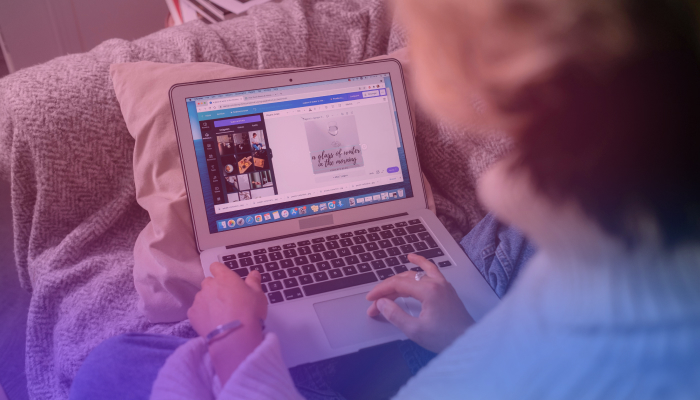ChatGPT Project vs. Claude Project: Which One is Better?
March 1, 2025
March 1, 2025
June 12, 2025
June 12, 2025
Are you an expert ChatGPT user wanting to organize your workflows and elevate your AI skills? Or perhaps you are exploring Claude alongside ChatGPT. While you may use both AI tools regularly, Claude Projects and ChatGPT projects may still be unfamiliar to you.
In this guide, we’ll explore exactly what Claude Projects is and how it differs from ChatGPT Projects. After reading this guide, you’ll know which feature and workflow work best for your work and personal projects.
What is Claude Project?
Claude Project is a specific and dedicated chat in Claude AI that allows users to maintain context and continuity across multiple interactions. This makes having clear, focused conversations on specific topics or workflows easier. You can work on complex tasks over multiple chat sessions without losing track of what you're doing. You can also:
- Provide specific instructions for the project to do.
- Upload different types of sources.
- Set up custom preferences and parameters for the AI to follow.
- Save and reference previous conversations within the project.
- Collaborate with team members by sharing project contexts.
For example, I use it for optimizing our team’s workflow when building links for our clients. We have a very systematic workflow on how we find partners to exchange links.

So, instead of doing everything manually, a Claude project will streamline the process by providing specific instructions and resources like our blog content guidelines.
Pricing
Claude is free but with limited access. You’ll need the Claude Pro plan, which is $20 per month (when billed monthly), to have personal access to Claude Projects. However, if you need your team to access shared Projects, you’ll need the Team plan. It costs $30 per user, with a minimum of 5 members.
What is ChatGPT Project?
ChatGPT Project is a way to organize files and chats for personal use, making it easier to manage work across multiple conversations with different sources. It’s easier to consolidate chats, files, and custom instructions in a single location. You can use them for long-term work or simply to maintain organization.
For example, I use ChatGPT Project for organizing my daughter’s first grade curriculum. I use it to:
- Coordinate the different sources of curriculums.
- Brainstorm activity ideas based on specific interests and items in the house.
- Create checklists of what to cover daily, weekly, and monthly.
Before Projects, I used to have individual chats for each subject (Science, Art, Math, English, and Music). But sometimes, certain activities actually combine a few or all subjects. It’s much easier to organize the chat, knowing I have all the resources and chat history in one place.

Plus, it’s just visually appealing to collect multi-topic but connected discussions in one place.
Note that ChatGPT Project is different from Custom GPTs. For one thing, GPTs are shareable with a specific group of people or anyone on the internet. It also can handle more complex projects, acting like an AI assistant that can help you with different marketing and coding projects.
ChatGPT Project Pricing
ChatGPT Project is one of the key features available on the Plus plan, which is $20 per month. It also includes:
- Access to GPT‑4o, which provides more advanced AI capabilities.
- Early access to new features and improvements.
- Faster response times during peak hours.
- Ability to use third-party plugins to extend functionality.
- Create Custom GPTs.
Make sure to check ChatGPT’s pricing page for the latest pricing.
Claude Projects vs ChatGPT Projects
Both Claude and ChatGPT Projects leverage powerful AI capabilities to streamline workflows, organize data, and improve productivity. However, they differ in how they handle and process information.
Context Handling and Context Window
Claude is designed to prioritize context handling, ensuring that responses remain highly accurate and relevant to the resources you provide. Its context window is larger than ChatGPT’s, allowing it to retain and process more information within a conversation. This makes it particularly useful for complex projects that require continuity across multiple sessions.
On the other hand, ChatGPT also boasts impressive AI capabilities, with its strength lying in generating comprehensive responses and integrating external knowledge sources like URLs. It excels in tasks that require creativity and flexibility, making it a strong option for project management tools where users need ongoing access to multiple datasets and evolving content.
Pros of Using Claude Projects

- It shows you which documents in scans to find the answer to your questions.
- It prioritizes your resources before using Claude’s AI models, which make the responses specific.
- It easily provides custom instructions for the workflow you want in each project.
Cons of Using Claude Projects
- It can’t read and search external URLs.
- You can’t upload a video as one of its resources.
- You’ll need to update the resources constantly if you add new details regularly.
For example, I use Claude to write content briefs. I need to update our blog master spreadsheet weekly to account for the blog posts that were published that week and then upload the spreadsheet to Claude again.
Pros of Using ChatGPT Projects
- It provides smart and comprehensive answers as usual.
- It makes it easy to navigate chats and workflows that you always use.
- Keeps the ChatGPT chats visually neat.
- Generate images based on your text input.
- It can read and search URL.
Cons of Using ChatGPT Projects
- Unlike Claude, ChatGPT Projects tends to prioritize information from its models instead of the resources you feed it first.
- It's also more difficult to organize files since you can't create folders within Projects to further categorize your chats and resources.
- It doesn’t show you if it’s scanning your resources and getting the answers from there.
- You can’t share Projects with a teammate. This is for personal organization only.
I mostly use ChatGPT Projects for my own personal projects like homeschooling and personal finance.
Each has its own strengths and weaknesses. I use both in different use cases. Claude outperformed ChatGPT if you want precise answers based on your own resources.
On the other hand, ChatGPT shines if you are using data analysis and constant access to the internet.
If you’re a heavy ChatGPT user and just need a better way to organize chats, ChatGPT Projects is enough for that purpose. I mainly use it for marketing projects, but others have also used it for writing code, code snippets, and other coding assistance.
How to Use Claude Project
Now that you know the pros and cons, let’s set up your first Project.
Here's how to create your first Claude Project:

- Go to claude.ai and click on "New Project" in the sidebar.
- Give your project a name that reflects its purpose.
- Upload any relevant files or documents as resources.
- Set your custom instructions to guide Claude's responses.
- Start your first chat within the project context.
The key is to be specific with your instructions and organize your resources well. This ensures Claude understands exactly what you need for your particular use case.
Let me continue the example of using it for content briefs. Here are the resources that I’ve uploaded:
- Blog guidelines
- List of blogs that we have published with the link and main keywords Examples of our best blog posts
- Details about the product
- Detailed instructions on what the response should be
- Content call transcripts
Since it’s a content brief, I need it to structure the response to an outline, word count, and suggestions for which blog posts should be linked in the brief.
Make sure to create a Claude Project with very specific output, so you won’t have mixed results. For example, if you want a Project to update an old article, only work with that specific output. Don’t add other steps unrelated to updating an old article. Create a separate project if you must. I have a separate Project for link building, image generation, and article updates. While they are still part of our blog workflow, the resources and output are slightly different.
How to Use ChatGPT Project
Setting up a ChatGPT Project is straightforward. Here's how to get started:

- Log into ChatGPT and click on "New Project" in the top navigation.
- Name your project and add a description to help you remember its purpose.
- Upload any relevant files you want to reference in your conversations.
- Set custom instructions if needed for consistent responses.
The beauty of ChatGPT Projects is that you can keep all related conversations in one place. For instance, in my homeschooling project, I have separate conversations for curriculum planning, daily activities, and progress tracking, but they're all organized under one project umbrella.
How to Use Tactiq's Transcripts as Resources
The great thing about both Claude and ChatGPT Projects is that the more resources you provide, the better the responses are. And one of the most underrated resources is your call transcripts.
If you’re not automatically transcribing your calls, you’ll need to install a tool like Tactiq.
Here's how to use Tactiq transcripts effectively with AI projects:
- Install the Tactiq Chrome extension and enable it for your video calls. It will automatically transcribe your meetings in real time.
- Once you have your transcripts, you can export them as text or PDF files and upload them directly to Claude or ChatGPT Projects as reference materials.
For example, I upload transcripts from client discovery calls and content strategy meetings in my content brief and project management above. This helps Claude and ChatGPT understand the client's voice, preferences, and specific requirements directly from their own words.

You can either collect multiple transcripts in one PDF file or upload individual transcripts. What’s great about Tactiq is that it also has AI summaries and the ability to customize your own AI workflows. It also integrates with other tools such as Notion, Google Drive, and Linear.
{{rt_cta_ai-convenience}}
Wrapping Up
Both ChatGPT and Claude Projects offer unique advantages for organizing and managing AI-assisted work. While ChatGPT Projects excels in personal organization and creative writing tasks with its user-friendly interface, Claude Projects stands out for team collaboration and precise, resource-based responses. The choice between the two ultimately depends on your specific needs - whether you prioritize personal workflow organization or team-based projects requiring accurate, resource-driven outputs.
By understanding their distinct features, limitations, and use cases, you can make an informed decision about which platform better suits your requirements. Remember that both tools can be enhanced by integrating resources like Tactiq transcripts to provide more context and improve the quality of AI responses.
Yes, ChatGPT introduced the Projects feature in late 2024 as part of its Plus subscription. This feature allows users to organize conversations, files, and custom instructions in one place, making it easier to manage related work across multiple chats.
Claude's Project is designed to maintain context across multiple conversations, allowing users to work on complex tasks with consistent instructions, shared resources, and team collaboration capabilities while keeping everything organized in one place.
No, Claude's Project is not free. It requires a Pro plan ($20/month) for personal access or a Team plan ($30/user/month, minimum 5 members) for team collaboration and advanced features.
Choose ChatGPT Projects for personal organization and general tasks that need creative responses. Use Claude Projects when you need precise answers based on specific resources, team collaboration features, or complex analytical work that requires maintaining detailed context.
A practical example of a Claude Project is a content brief workflow where you upload blog guidelines, published content lists, code snippets, product details, and custom instructions. Claude then creates structured content briefs while maintaining context across all resources.
Want the convenience of AI summaries?
Try Tactiq for your upcoming meeting.
Want the convenience of AI summaries?
Try Tactiq for your upcoming meeting.
Want the convenience of AI summaries?
Try Tactiq for your upcoming meeting.









